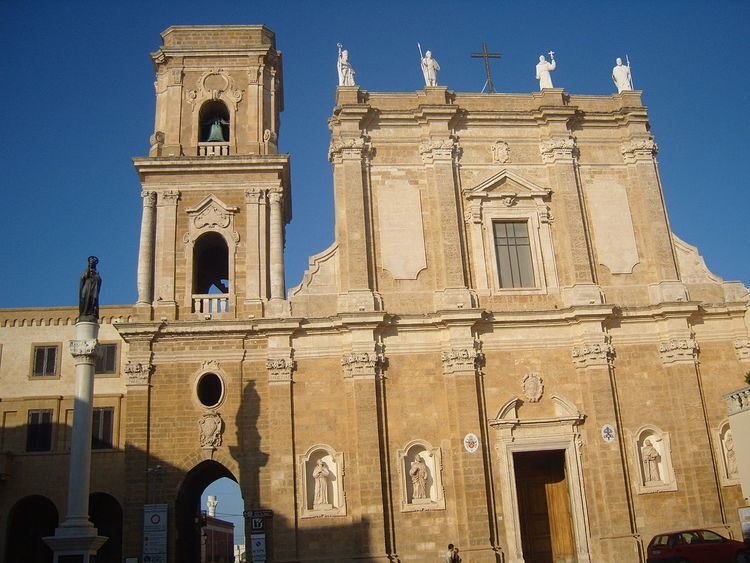Parishes 60 Area 1,253 km² Phone +39 0831 617444 | Established 4th Century Country Italy | |
 | ||
Population- Total- Catholics (as of 2015)276,604273,141 (98.7%) Cathedral Cattedrale della Visitazione e S. Giovanni Battista Ecclesiastical province Roman Catholic Archdiocese of Lecce | ||
The Italian Catholic Archdiocese of Brindisi-Ostium (Latin: Archidioecesis Brundusinus-Ostunensis) in Apulia, has carried its present name since 1986. It is a suffragan of the archdiocese of Lecce.
Contents
The historical archdiocese of Brindisi was promoted from a diocese in the tenth century. The territory of the diocese of Ostuni was added to it in 1821. The archdiocese lost its status as metropolitan see in 1980.
History
According to a local legend, the first Bishop of Brindisi was St. Leucius, about 165, who later underwent martyrdom. There is no historical proof for early beginnings of Christianity, except the account given by Arnobius of the fall of Simon Magus, who according to him withdrew to Brindisi and cast himself from a high rock into the sea.
The Diocese of Brindisi at first embraced the territory comprised within the present diocese of Oria. In the tenth century, after Brindisi had been destroyed by the Saracens, the bishops took up their abode at Oria, on account of its greater security.
From 1572-1591, during the tenure of the Spanish Bishop Bernardino de Figueroa movements were made to separate Oria as seat of a new diocese. This occurred in 1591, with Vincenzo del Tufo being appointed the first bishop of Oria in 1596. In the reorganization of the dioceses of the Kingdom of Naples in 1818 Brindisi was combined with the Diocese of Ostuni, formerly its suffragan.
Brindisi has been an archiepiscopal see since the tenth century. The ancient cathedral was located outside the city, but in 1140 Roger II, King of Sicily and Naples, built the present cathedral in the centre of the city.
Bishops of Brindisi
Among the bishops of Brindisi were:
